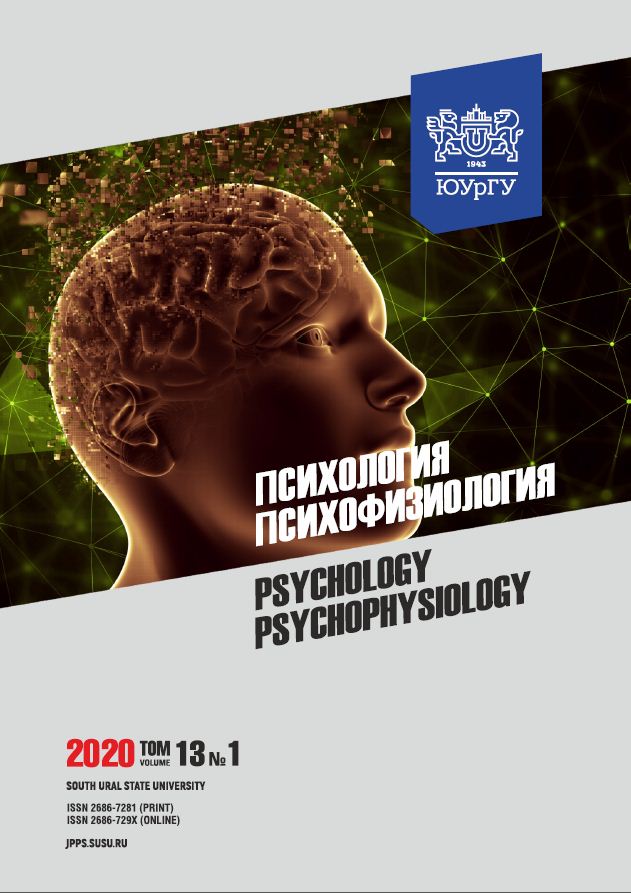THE FUNCTIONAL STATUS OF THE CENTRAL NERVOUS SYSTEM IN MEDICAL STUDENTS IN THE MIDDLE OB REGION
Abstract
In uncomfortable conditions, high academic load leads to adaptive changes in medical students. The functional status and level of functional capacities in students determines the effectiveness of adaptation and cognitive performance. Aim. The article aims to identify the features of the functional status of the central nervous system using the data of simple visual-motor reaction in medical students studying in the northern region. Materials and methods. 95 students were examined, 51 females and 44 males. The average age was 19.62 ± 1.57 years. The indicators of variational chronoreflexometry were determined through the data of simple visual-motor reaction. The level of functional capacities of the central nervous system, the stability of reactions, and the functional level of the system were calculated. The study was carried in accordance with the method proposed by M.P. Moroz (Express-diagnostics of the functional status and human performance). Results. It was established that in most cases the functional status of the central nervous system in medical students corresponded with reduced and slightly reduced mental performance. Simple visual-motor reaction time in male and female students was 280.47 ± 2.34 ms and 278.09 ± 2.92 ms, respectively. Significant differences were not revealed among the studied groups. Conclusion. The functional status of the central nervous system in medical students of the Middle Ob region is characterized by high neuropsychic tension, increased fatigue, decreased working capacity, weakened attention and concentration.
Downloads
References
2. Baiguzhin P.A. [Factors of productivity of psychophysiological research of the functional condition of the central nervous system at students]. Bulletin of the South Ural State University. Ser. Education, Healthcare Service, Physical Education, 2011, no. 26 (243), pp. 131–135. (in Russ.)
3. Baiguzhin P.A., Kirsanov V.M., Shibkova D.Z. [Characteristics of the functional state of the nervous system of students depending on the level of educational and professional activities regulations]. Vestnik Novosibirskogo gosudarstvennogo pedagogicheskogo universiteta [Novosibirsk State Pedagogical University Bulletin], 2017, vol. 7, no. 3, pp. 223–240. DOI: 10.15293/2226-3365.1703.14 (in Russ.)
4. Bartosh T.P., Bartosh O.P. [Functional state of the Central nervous system of 15-17-year-old girls with different levels of neuropsychic adaptation]. Vestnik psikhofiziologii [Psychophysiology news], 2018, no. 1, pp. 114–116. (in Russ.)
5. Buduk-ool L.K., Khovalyg A.M., Saryg S.K. [Psychophysiological and neurodynamic characteristics of students of the tuvan state university]. Fundamentalnye issledovaniya [Fundamental research], 2014, no. 12-4, pp. 756–759. (in Russ.)
6. Leutin V.P., Nikolaeva E.I. [Adaptive strategies and specificity of functional asymmetry of the brain]. Psikhologiya obrazovaniya v polikulturnom prostranstve [Educational psychology in polycultural space], 2008, no. 3–4, pp. 12–22. (in Russ.)
7. Lopatskaya Zh.N., Poborskiy A.N., Yurina M.A. [Quality of life indicatorsof medical institute students with different levels of anxiety]. Vestnik SurGU. Meditsina [Vestnik SURGU. Medicina], 2018, no. 2, pp. 69–73. (in Russ.)
8. Moroz M.P., Chubarov I.V. [Methodology for evaluating and predicting human operator performance]. Sovremennye podkhody k kolichestvennoy otsenke urovnya fizicheskogo, psikhicheskogo i sotsialnogo zdorovya detey i podrostkov [Modern approaches to quantifying the level of physical, mental and social health of children and adolescents]. Saint Petersburg, Petrocentr, 2001. 80 p. (in Russ.)
9. Moroz M.P. Ekspress-diagnostika funktsionalnogo sostoyaniya i rabotosposobnosti cheloveka [Express diagnostics of the functional state and health of a person]. Saint Petersburg, Imaton, 2003. 38 p. (in Russ.)
10. Nikolaeva E.N., Kolosova O.N. [Physiological estimation of the state of the central nervous system of students in the period of educational activity]. Nauka i obrazovanie [Science and education], 2017, no. 3 (87). pp. 96–100. (in Russ.)
11. Rukovodstvo po funktsionalnoi mezhpolusharnoi asimmetrii [Functional guide interhemispheric asymmetry]. Ed. Fokin V.F., Bogolepova I.N., Gutnik B. et al. Moscow, Scientific Mir, 2009. 836 p.
12. Solovyev V.S., Litovchenko O.G., Solovyeva S.V., Pogonyshev D.A., Naymushina A.G. [Comprehensive North adaptation studies]. Vestnik Surgutskogo gosudarstvennogo universiteta [Surgut State University journal], 2016, no. 3, pp. 54–56. (in Russ.)
13. Sotnikova V.V., Volchek V.S. [Sexual characteristics and correlation relations of psychophysiological indicators in medical students]. Aktualnye nauchnye issledovaniya v sovremennom mire [Actual scientific research in the modern world], 2017, no. 5-8 (37), pp. 137–139. (in Russ.)
14. Frolova A.S., Krotenok K.S. [Gender differences in the sensorimotor response of medical university students with different types of autonomic regulation]. Aktualnye nauchnye issledovaniya v sovremennom mire [Actual scientific research in the modern world], 2018, no. 5-3 (25), pp. 58–63. (in Russ.)
15. Shalamova E.Yu., Safonova V.R., Ragozin O.N., Radysh I.V., Bochkarev M.V. [Intersystem interrelations of functional parameters and psychosocial characteristics of students of medical university in the North]. Ekologiya cheloveka [Human Ecology], 2018, no. 1, pp. 29–35. (in Russ.)
16. Yakovlev B.P., Litovchenko O.G. [Psychophysiological characteristics of the working capacity of students]. Gigiena i sanitariya [Hygiene and sanitation], 2008, no. 1, pp. 60–63. (in Russ.).
17. Gishen F. Medical Student Resilience: A symposium approach. The Clinical Teacher, 2018, no. 15, pp. 1–3.
18. Kostencka A. Etiopathogenetical and clinical relation of stress and depression. Health Sciences, 2014, no. 4, pp. 222–228.
19. Oztasan N., Ozyrek P. Factors associated with health-related quality of life among university students in turkey. Mater Sociomed, 2016, no. 2(8), pp. 210–214.
References on translit
Copyright (c) 2020 Psychology. Psychophysiology

This work is licensed under a Creative Commons Attribution-NonCommercial-NoDerivatives 4.0 International License.



